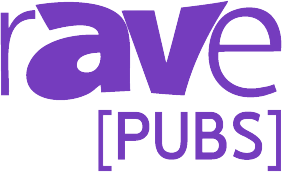Mountbatten Festival of Music Utilizes Two DiGiCo Quantum7 And An SD7B For Complex Royal Albert Hall Gala Events

The Mountbatten Festival of Music utilized two DiGiCo Quantum7 consoles, supplied by Terry Tew Sound & Light. Over two days, Zen Broadcast not only captured the event for live streaming – a DVD and album release mixed in their Outside Broadcast (OB) truck by Zen’s Sound Supervisor and Music Associate Andy Deacon – they also delivered immaculate sound in the Hall, mixed by Ben Milton, with precision monitor mixes handled by Bill Birks. The engineers used two DiGiCo Quantum7 in the house and a DiGiCo SD7B in the truck to deliver crystal clear sound to audiences, across a variety of platforms.
A military gala event held in London’s Royal Albert Hall, the Mountbatten Festival of Music raises funds for Royal Navy and Royal Marines charities. The first Mountbatten Festival of Music was held in 1973, as part of the Royal Academy of Music’s 150th anniversary appeal and has been on the bill ever since. With over 50 years of performance, it is one of the Royal Albert Hall’s longest running returning shows. The performances feature the Massed Bands of His Majesty’s Royal Marines in a spectacular celebration of pageantry and skill. Over two days, the bands performed to sold-out audiences at the iconic London venue, accompanied by special guests and solo artists appearing on stage and via the big screens.
“This OB truck is built around the SD7B, and before that, the SD10,” Deacon explains. “DiGiCo just works for us. We set the truck’s racks to the lowest Optocore ID and they become the sync source. This means everything on the Optocore loop will automatically clock to the truck. Running the network in this way delivers an elegant solution for a show of this size.”
To maximize fundraising, the production and creative teams smash out three shows in two days, completing a recording session before the first show to facilitate a commemorative album. Working long hours to ensure the show happens is something that the whole team feels passionate about doing, as Milton and Birks continue.
“Getting this show in front of the audiences in such a tight timeframe requires dedication from everyone involved, especially the bands,” Milton recalls. “Terry Tew Sound & Light provide the Quantum7s for the whole production run, so we keep the same consoles from rehearsals in Portsmouth right the way through to the Royal Albert Hall. This means we are fully prepped once we get to the venue, saving valuable time.”
“The console-to-console comms help to streamline things, too,” Birks continues. “I take 90% of the inputs individually, but there are some channels that I don’t need, until someone suddenly does! A quick call or message to Ben and they’re available to add – it’s brilliant. Restructuring to add or take away inputs or outputs is all very intuitive and useful for organizing the console layout.”
Using a DiGiCo SD7B console for the broadcast and recorded elements not only keeps the audio workflow simple, it also improves the experience for all engineers. DiGiCo consoles provide a recognizable workflow, simplifying and widening the possibility of engineers from any background being able to quickly adjust mixes.
“We have three OB trucks, each with different consoles, but the DiGiCo truck is the one we use most often,” Deacon expands. “The DiGiCo console is just a nice desk to work on ergonomically, it sounds great, plus it’s a good size and price point. Ultimately, it has the flexibility that we need, and when we have guest engineers from a live or theatre background, they’re always really glad to see it. On multiple solo-artist shows like these, it means any engineer can easily make any adjustments their artists may need.”
Another useful feature for the team is the Copy Audio function. This allows engineers to route audio directly, bypassing any channel processing or fader level changes, making it possible to create clean, multitrack recordings of every show and provide instant playback for the musical director. With a simple Snapshot button press, Deacon can re-route the recording audio and send it to Birks, who can feed it directly into the MD’s in-ear-monitors. It is a quick way to make sure everyone is on the same page.
“The show has really developed over the last few years and is now much more involved. We had 12 singers this year who were not used to using in-ears, but they just got on with it,” Birks says. “With a bit of support, we managed to keep everyone happy. Most of the band hadn’t used in-ears before, either, so getting them used to that environment and seeing them keep their ears in for the duration of the show is a good sign.”
DiGiCo consoles take care of much of the hard work, thanks to the power of the FPGA processing chips. The result is an intuitive, lighting-fast workflow that, as Birks concludes, helps to keep everything running smoothly.
“You can mix the orchestra down to a left and right, and, because the console has such a simple layout, you can assign mixes to performers’ IEMs almost instantly, so all you have to worry about is balancing the vocal,” he says. “You’re almost 70% there before they even arrive on stage. The workflow really helps to makes a sizeable show easily manageable, and makes my job so much easier.”





